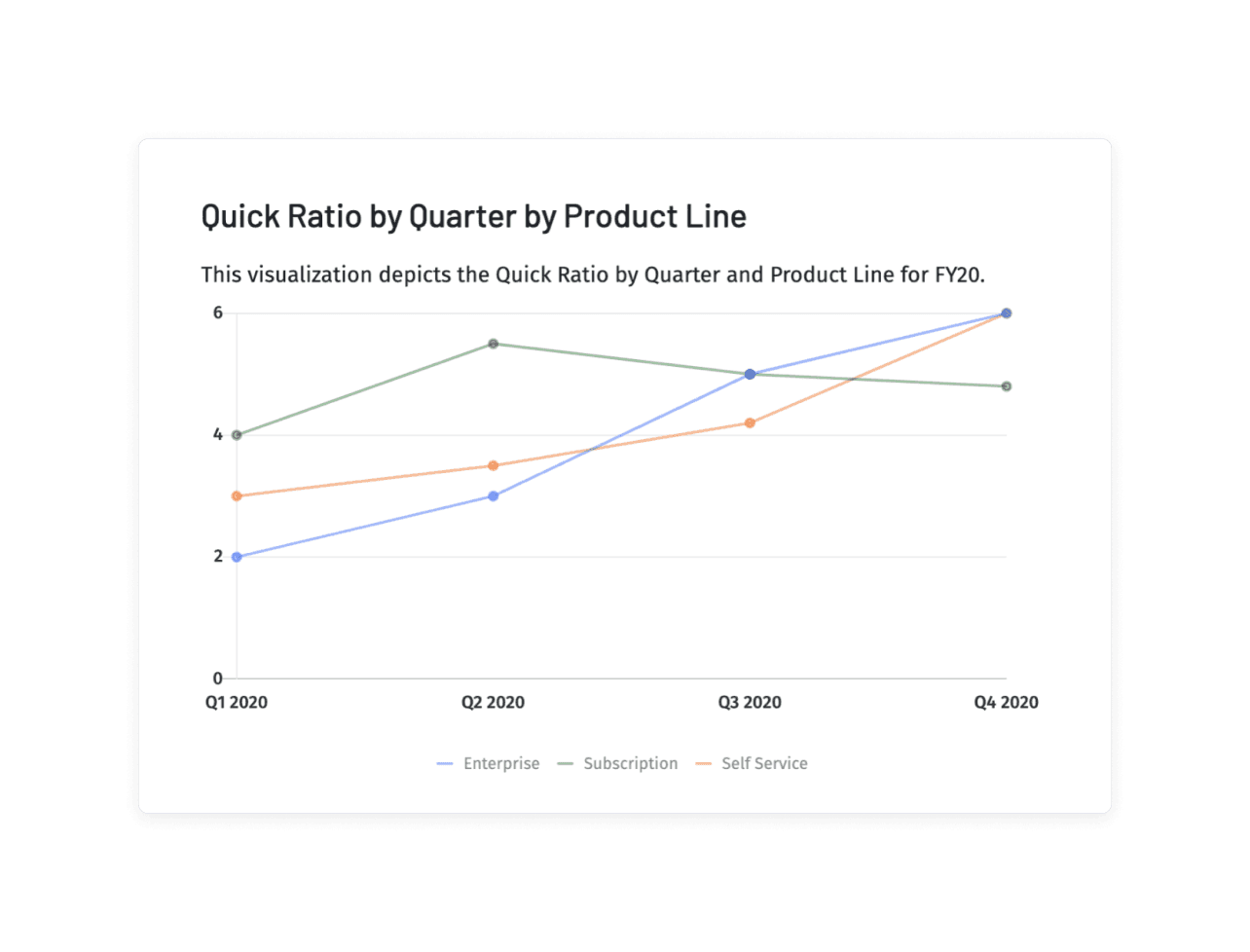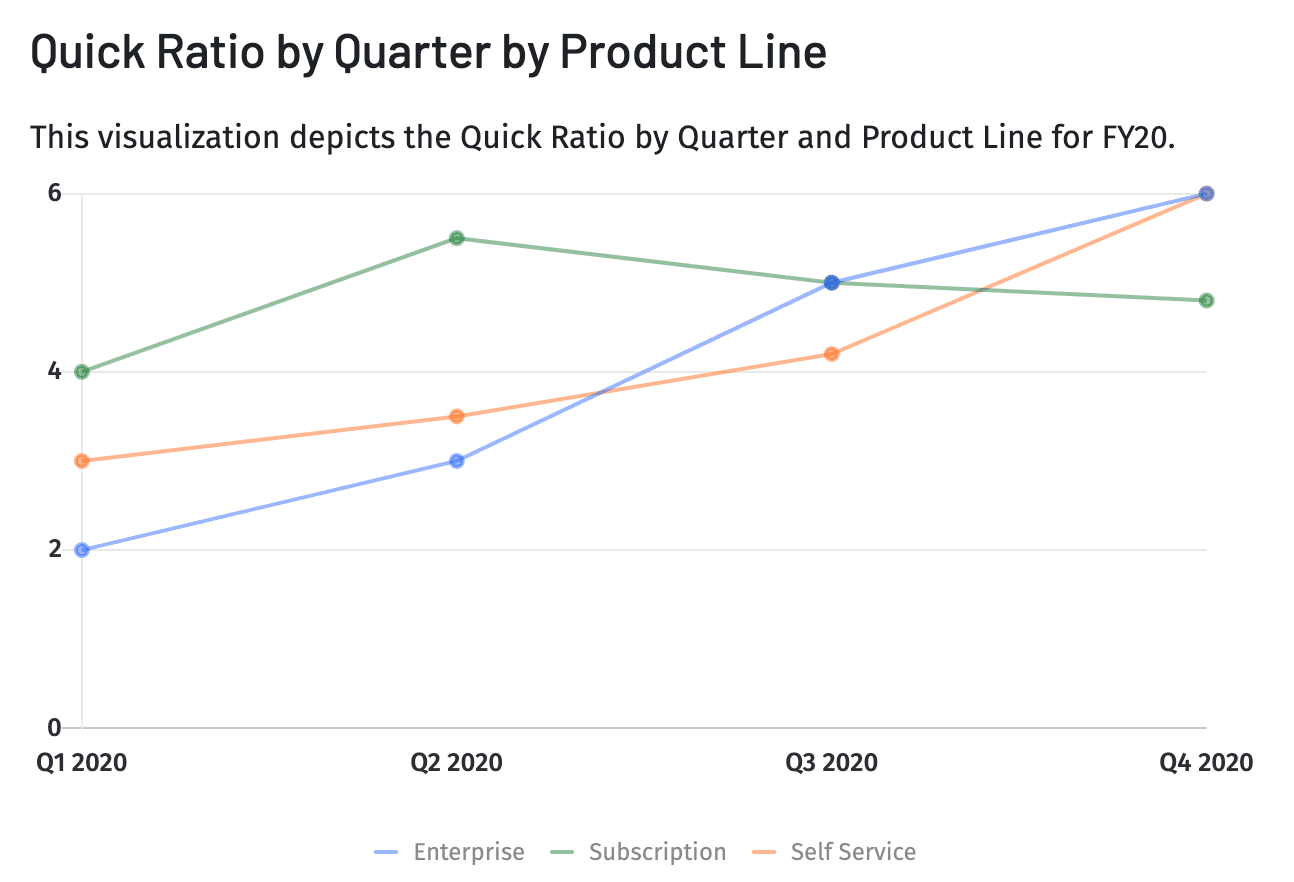What Your SaaS Quick Ratio Can Tell You
What Is SaaS Quick Ratio?
The SaaS Quick Ratio measures a company’s ability to increase its recurring revenue in the face of customer losses. For SaaS companies, it does this by comparing the revenue from new and upgraded subscriptions with the revenue lost from canceled or downsized subscriptions, revealing the overall revenue growth.

Categories
How do you measure the growth efficiency of a SaaS company? There’s no one-size-fits-all answer, but there are plenty of different SaaS metrics that can help you gauge whether or not your business is on the right track.
There’s the SaaS magic number that helps you understand if you’re building an efficient sales and marketing engine. And in later funding rounds, you can use the rule of 40 to help prove that you’re striking the right balance between growth rate and profitability.
But there’s one particular measuring stick for an early-stage SaaS company’s growth efficiency that you shouldn’t overlook — the SaaS quick ratio, coined by venture capitalist Mamoon Hamid. If you’re an early-stage SaaS startup preparing its next board deck, this metric can give you a more realistic view of how you’re balancing new revenue growth with retention.
Table of Contents
What Your SaaS Quick Ratio Can and Can’t Tell You
In SaaS, the quick ratio is a simple financial efficiency metric that highlights your ratio of MRR growth compared to churn and contraction MRR. But not all finance leaders see the SaaS quick ratio as a strong indicator of a company’s ability to drive growth sustainably.
Ben Murray, The SaaS CFO, “would classify this metric as directional. It answers the question, ‘what is our net inflow or outflow of MRR or ARR bookings?’ It does not tell me anything about the financial efficiency of our bookings.’”
Your SaaS quick ratio looks at net gains (or losses) in recurring revenue or SaaS bookings over a given period. It’s an at-a-glance financial ratio for comparing your top-line vs. bottom-line growth and stability. But just because you have a good quick ratio doesn’t mean you’re growing efficiently. That’s why it’s so important not to judge the health of your business entirely on this metric but to look at the complete picture.
How Do You Calculate the SaaS Quick Ratio?
You calculate SaaS quick ratio by dividing your total revenue growth (net new MRR and expansion MRR) by total revenue losses (downgrade MRR and churn MRR).

For your SaaS quick ratio calculation, you’ll need accurate inputs for:
- New Revenue: Total recurring revenue you’ve gained from new customers over the given period you’re measuring.
- Expansion Revenue: Total new recurring revenue you’ve gained from existing customers over the given period, including upsells, cross-sells, add-ons, and account reactivations.
- Downgrade Revenue: Reductions in recurring revenue due to customers downgrading to a less costly subscription or reducing the number of seats for your software over the given time.
- Churned Revenue: Reductions in recurring revenue due to customer cancellations over the given time.
Note that you can use either MRR or ARR to calculate this metric. Your approach will depend primarily on your business model. If you’re operating on monthly contracts, offering a relatively simple subscription model, or focused on short-term performance, MRR will be best. But ARR is more commonly used by SaaS startups that target enterprise customers with complex subscription models that require a more long-term forecast.
Why Is the SaaS Quick Ratio Important?
The SaaS Quick Ratio is a quick and easy benchmark of how well your top line is growing relative to revenue reductions. It can act as a red flag or a green light in terms of whether to expect net recurring revenue to increase or decrease, and for this reason, it’s an investor favorite. If your SaaS business is in an investment-seeking phase, be prepared to provide this metric.
How to Interpret Your SaaS Quick Ratio
What are investors looking for when evaluating a SaaS company’s quick ratio? Three ranges indicate how healthy your SaaS revenue growth is:
Low SaaS Quick Ratio (Less than 1)
A SaaS quick ratio below 1 means that downgrades and high churn are outpacing top-line growth at your company. That’s a major problem. If you don’t make strategic changes quickly, your business could be heading toward the SaaS graveyard.
Average Quick Ratio (Between 1 and 4)
A SaaS quick ratio between 1 and 4 essentially means that you’re growing but somewhat unsustainably. Somewhat high churn or downgrade rates force you to work harder than you need to grow the business.
High Quick Ratio (Greater than 4)
A SaaS quick ratio of 4 typically means you have a healthy startup. It means that you’re adding $4 in revenue for every $1 of lost MRR. You have a low churn rate, reasonable contraction, and top-line growth looks solid.
These simple stats may be enough to provide a high-level overview of your startup’s health for investors. But for a quick ratio to have meaningful directional value for your business, you need more granular insight.
How Can You Use SaaS Quick Ratio to Grow (or Save) Your Business?
Using SaaS quick ratio to drive strategic decision-making around business growth requires contextual visibility. You need accurate, real-time data straight from your CRM and ERP to capture both customer and revenue data so you can dig deeper into the “why” behind your quick ratio.
Even if your quick ratio falls in the healthy range, you still need a clear understanding of what’s working and what isn’t as you grow. One way to do that is to break down your quick ratio by product line rather than just viewing it across the entire business, like in the image below.

High and low quick ratios in each product line could indicate different strategic needs.
Suppose your quick ratio is looking healthy in the enterprise segment but low for self-service customers. In that case, it may be time to rethink your marketing strategy and invest more in self-help content that improves your customer retention metrics.
But if your enterprise product line is suffering due to plateaus in top-line growth, you may need to consider adding to the sales team to drive an outbound strategy.
The key to these kinds of strategic insights is to combine quick ratio measurements with other SaaS financial metrics like the magic number, customer acquisition cost (CAC), customer lifetime value, revenue retention rates, and cash runway. When you have the right context around quick ratio, you can work with leaders across the business to chart a path forward.
Mosaic integrates with your critical business systems to pull real-time actuals and automatically provide reports on hundreds of financial metrics. Instead of spending time pulling and cleaning data from individual point solutions, you can focus on modeling out scenarios and collaborating with the business on strategic planning.
Start getting more out of metrics like the SaaS quick ratio. Learn how Mosaic can help you automate reporting and refocus your finance function on more forward-looking tasks.
Get Deeper Insight Into Quick Ratio & Other Metrics
SaaS Quick Ratio FAQs
What is the acid-test ratio?
The acid-test ratio measures liquid assets against current liabilities, but — unlike the SaaS quick ratio — it mainly uses quick assets like accounts receivable and cash equivalents to evaluate a company’s liquidity. Unlike the current ratio, it does not include inventory in its total current assets either and only measures whether a company has enough cash and short-term liquidity to cover short-term liabilities.
What is a good SaaS quick ratio?
What does too high of a quick ratio mean?
Explore Related Metrics
Own the of your business.




